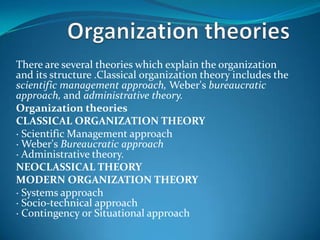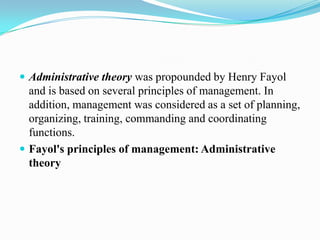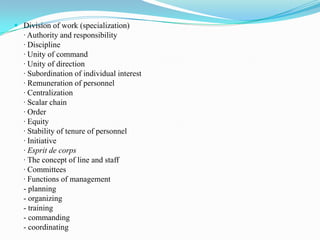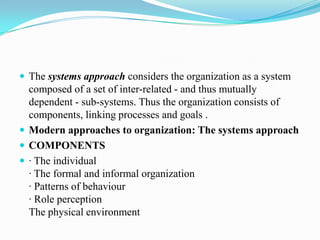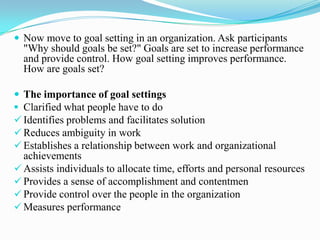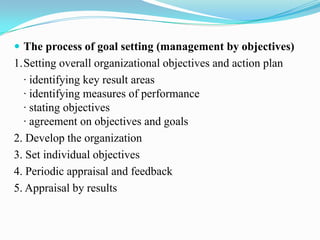The document outlines various theories of organization and management, including classical theories such as the scientific management approach and bureaucratic approach, as well as modern theories like the systems and contingency approaches. It emphasizes the importance of goal setting, integration, coordination, power dynamics, and communication within organizations. Additionally, it discusses the decision-making process, highlighting different models and techniques for effective organizational management.
